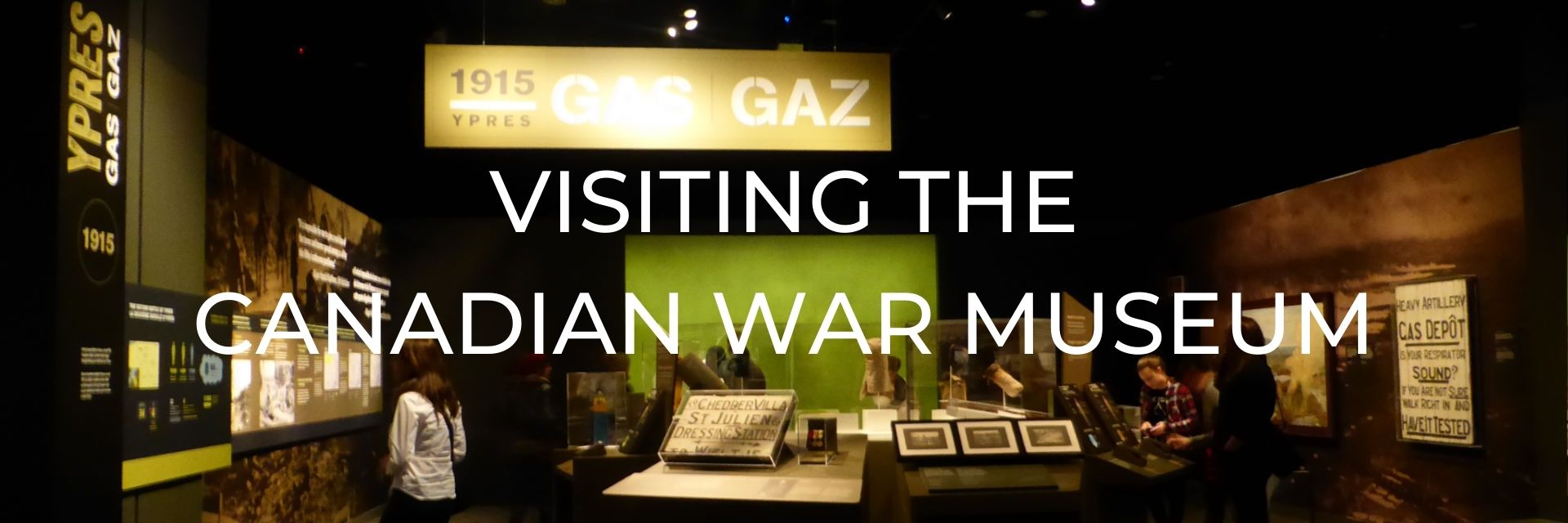
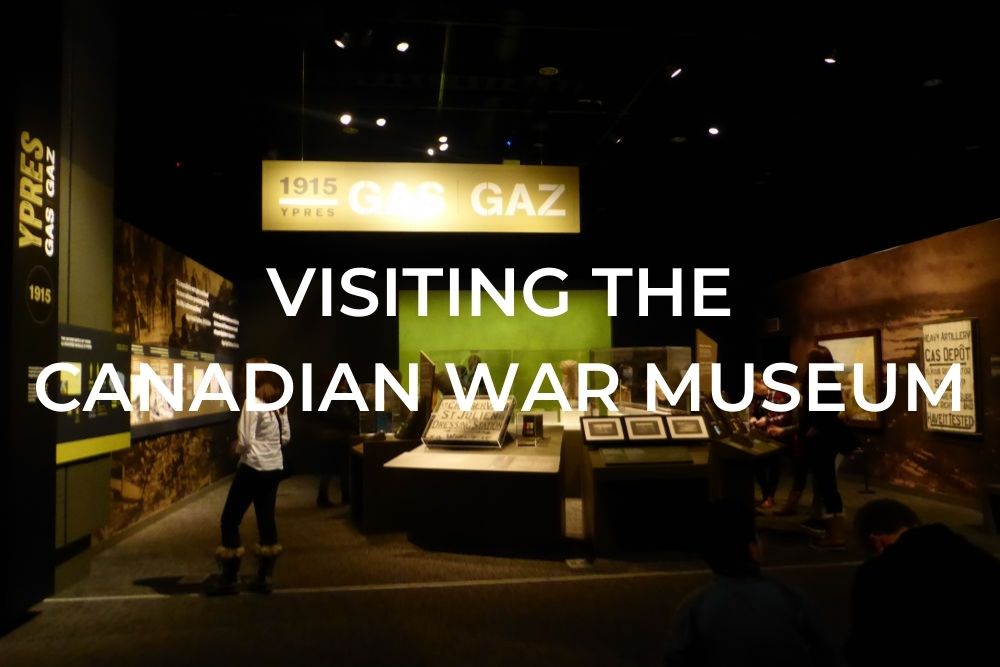
The Canadian War Museum is Canada’s national museum of military history and is one museum I’d highly recommend to everyone that visits Ottawa. Laid out in chronological order it features galleries starting with exhibits and artifacts from the first recorded deaths by armed violence from several hundred years ago, to the most recent conflicts- wars on Canadian soil, wars of the 20th century, the Cold War, and then on to peacekeeping missions abroad.
The Canadian War Museum originated in 1880 but not in the building it is in today. The current building was opened in 2005 and is now situated just a couple of kilometers from the Parliament buildings. It is low-lying and then sweeps up to an 80 ft peak to symbolize regeneration. There are also small windows in its copper roof that are a message in Morse Code. I totally missed that!
We visited on New Year’s Day during their free hours (from 4:00 -8:00 pm on Thursday evenings) but this is one museum that I would say is well worth the admission fee if your schedule doesn’t allow for a visit during those times.
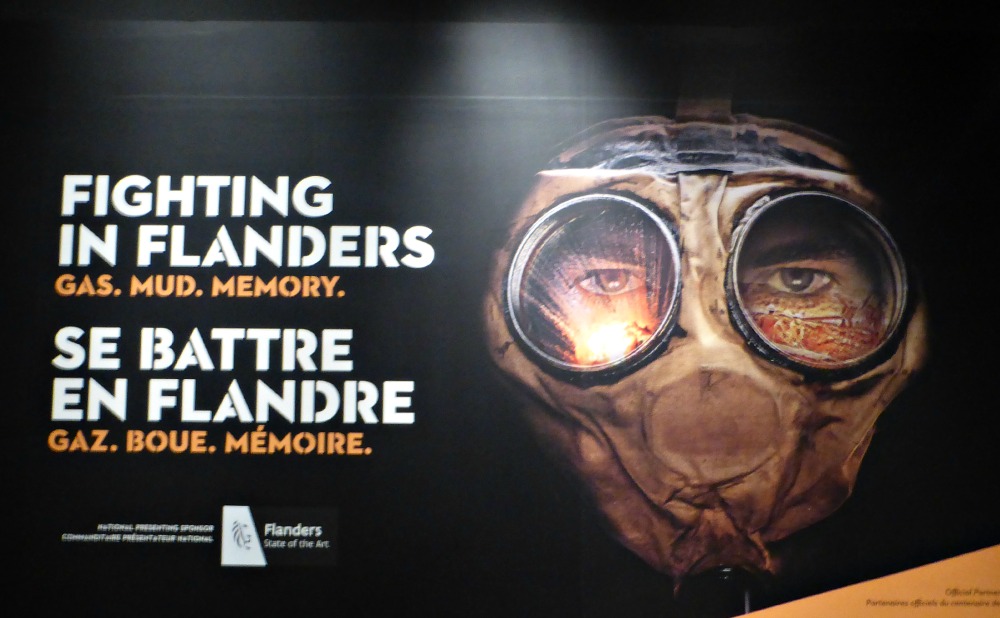
Our evening began with a visit to a temporary exhibition called “Fighting in Flanders- Gas. Mud. Memory.” which was developed in partnership with the Memorial Museum Passchendaele 1917 in Belgium. This exhibition explores how Canadians had to adapt to great challenges in Belgium during World War I- from the use of poison gas to the unrelenting mud of Passchendaele.
Having visited Ypres in 2014 on our trip to Normandy and Belgium, and with those areas of Belgium on our itinerary for our 2015 trip I was very interested in visiting this exhibit to learn a little more and the exhibit did not disappoint. From smelling different types of gas (some are absolutely horrible) to getting a better sense of the mud that was, in some cases, as fatal to the soldiers as the bombs and guns as they could drown in it. I can’t imagine how they went on day after day in those conditions.
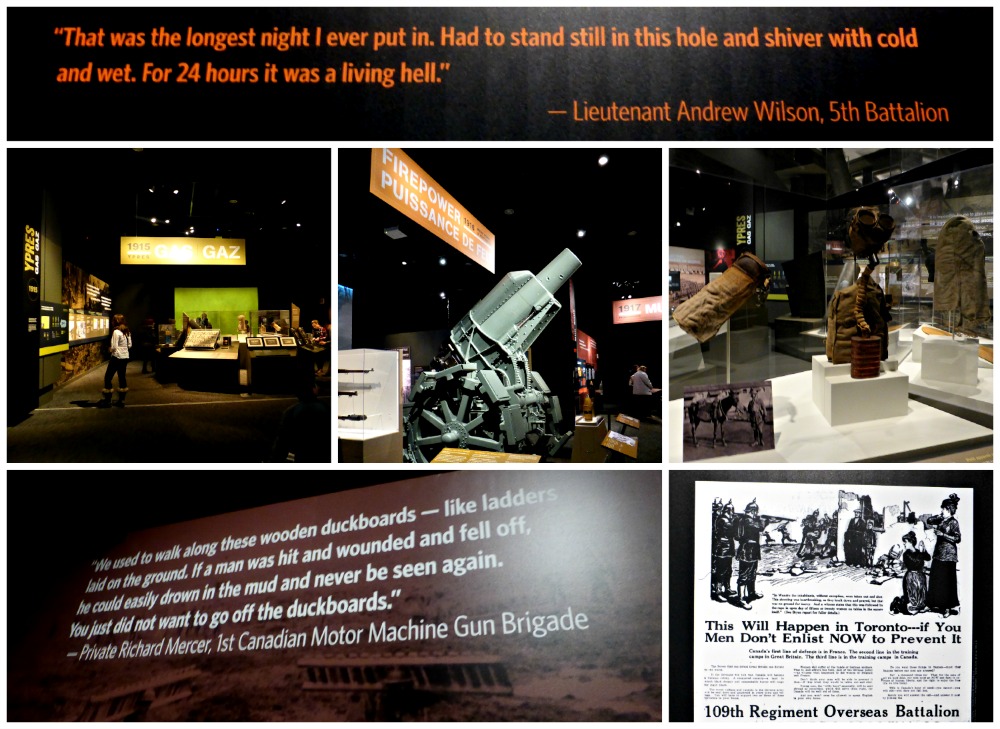
From there we entered the first of four galleries that house the permanent exhibitions in chronological order. I thought they were so well done and really appreciated the layout so I could put different conflicts in order and learn how one led to the other and then on to the next.
These four galleries are:
- “Battleground: Wars of the First Peoples, the French and the British on Canadian soil (earliest times-1885)” which includes conflicts such as the First Peoples warfare, the Seven Years’ War, the American Revolution, and the War of 1812.
- “For Crown and Country: South African and First World Wars (1885-1931)” which includes those two wars mentioned- especially focusing on the trench warfare in France and Belgium from 1915 to 1918, and battles such as the Somme, Vimy, Passchendaele, and the Hundred Days.
- “Forged in Fire: Second World War (1931-1945)” which includes information about the rise of dictatorships in Germany, Italy and Japan in the 1930s and then describes Canada’s role in World War II.
- “A Violent Peace: Cold War, Peace Keeping, Recent Conflicts (1945- Present)” which covers wars in Korea, the Persian Gulf, Kosovo, and Afghanistan. There are also many artifacts from the Cold War including a piece of the Berlin Wall.
Please join us now for few photos from these galleries…
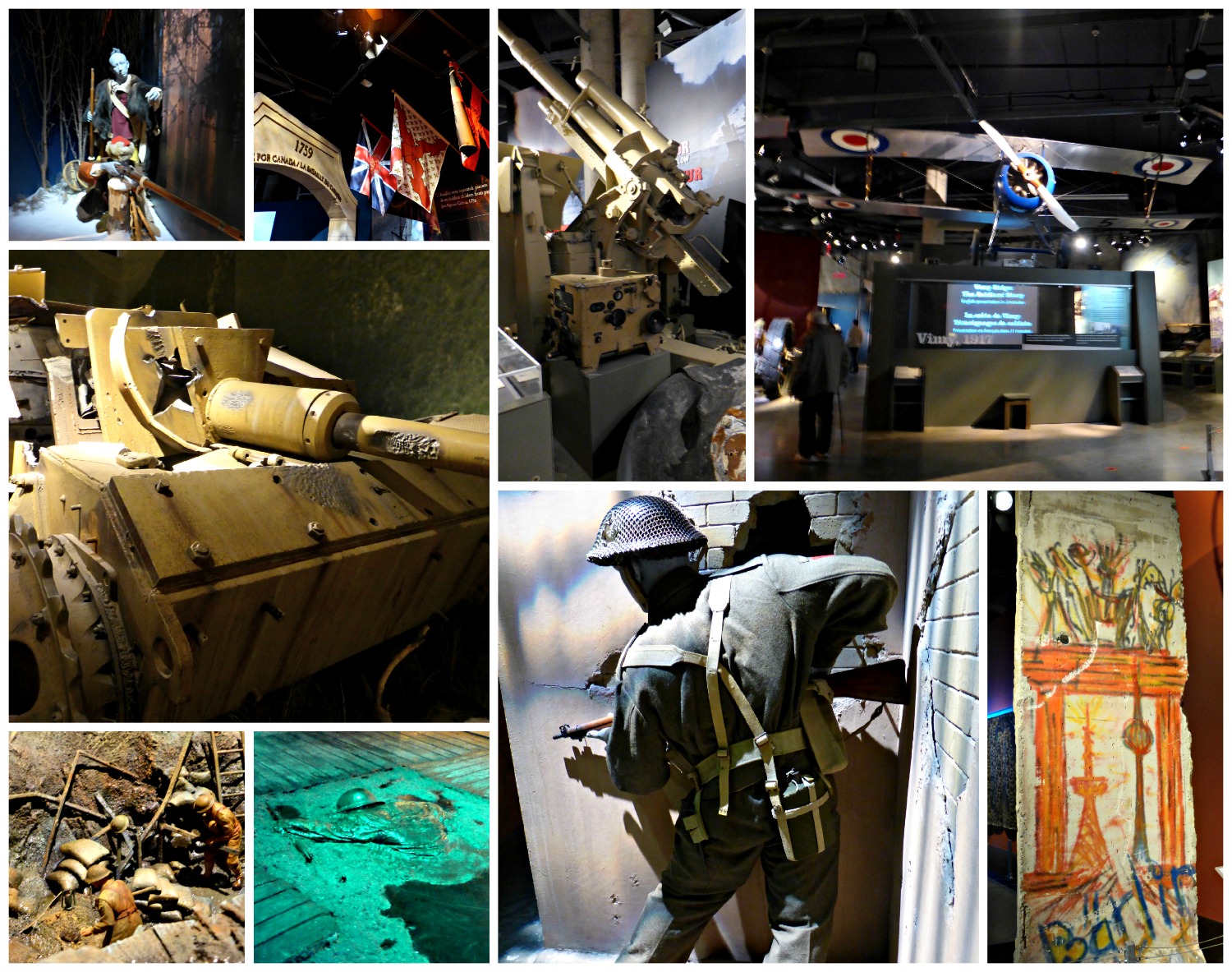
After spending a couple of hours visiting these galleries we then made our way into Regeneration Hall which is a narrow hall with angled soaring walls. The narrow triangular window at the end of the wall frames the Peace Tower on Parliament Hill. This hall was designed to be a “physical representation of hope for a better future.” It also features plaster casts used by the sculptor who created the Canadian National Vimy Memorial in Vimy, France which we were really interested in seeing as we knew that memorial was on our agenda for our trip in 2015. Several of the figures on the actual memorial in Vimy are up very high so it was nice to get a preview of them where we could walk around them and get up close.
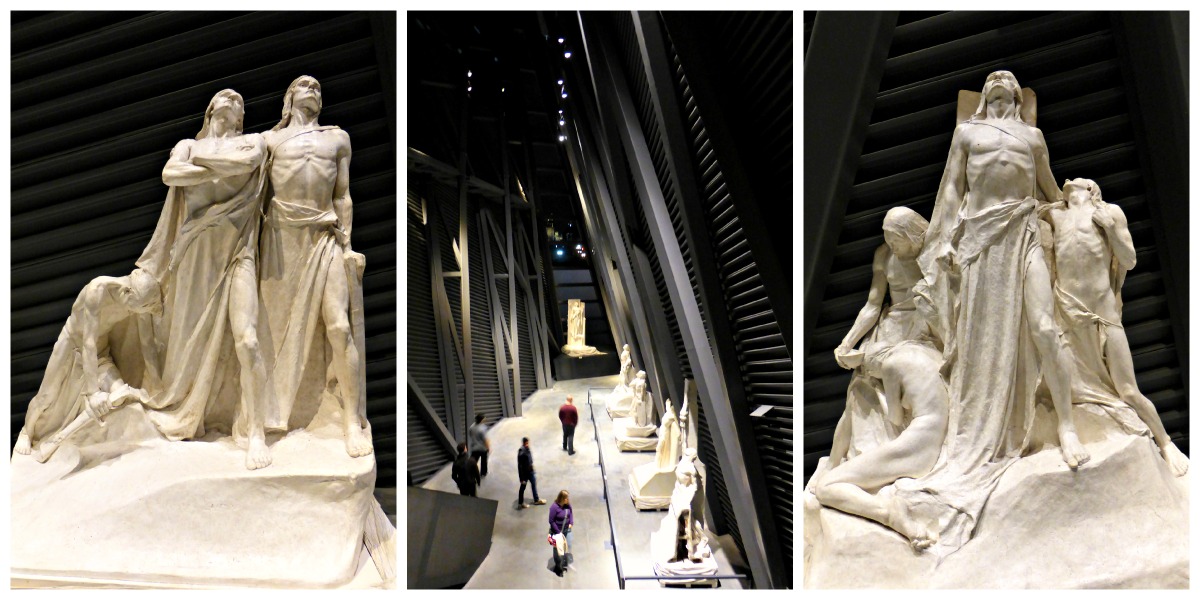
From here we moved on to the LeBreton Gallery which is a huge area displaying artillery, jets, tanks, and naval weapons.
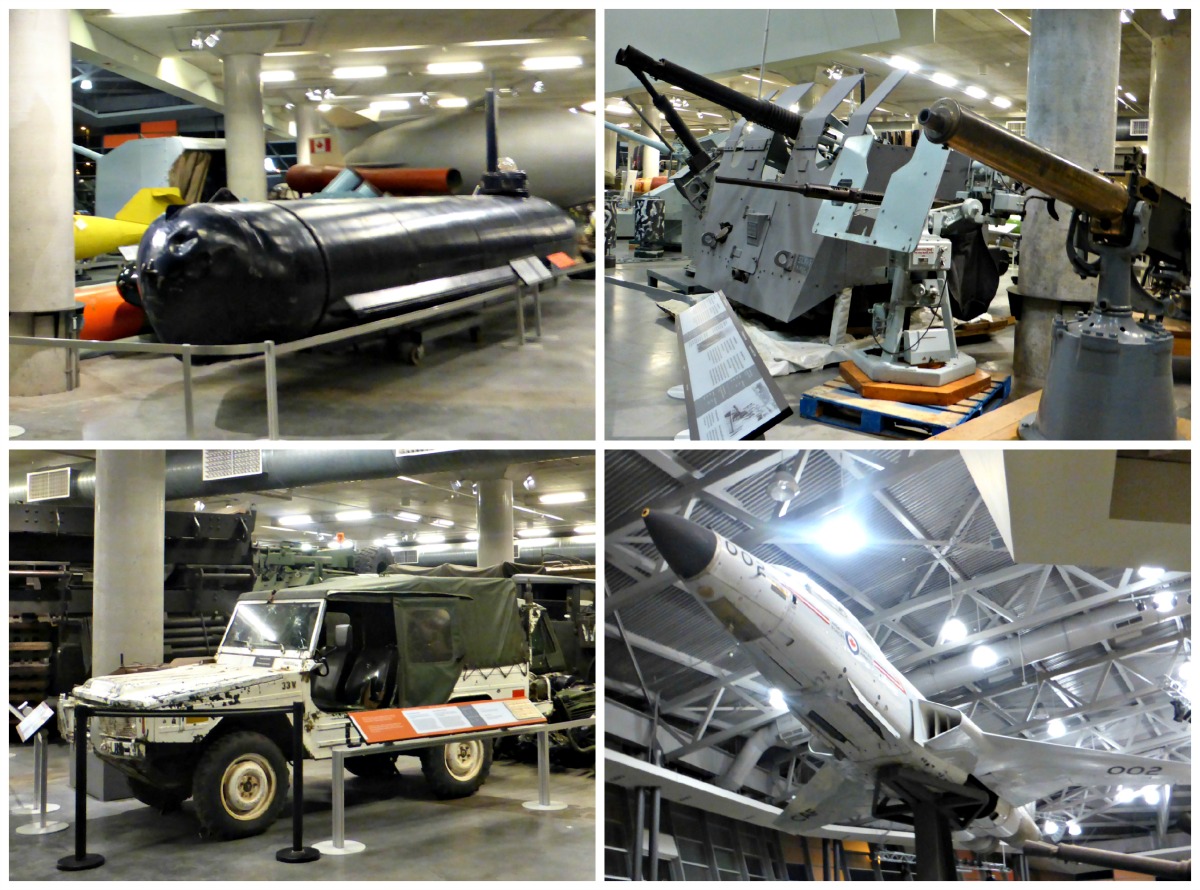
After wandering through this gallery we decided it was time to call it a night. I think in total we were there for about three hours- there is a lot to see!
One thing we didn’t see, as we didn’t realize it was there actually, was Memorial Hall. This room contains just one artifact- the headstone of Canada’s Unknown Soldier from WWI. There is only one window in the hall that is placed so that sunlight will directly illuminate the headstone on Remembrance, November 11 at exactly 11:00 am.
RESOURCES | PLAN YOUR TRIP TO CANADA
Some of the links in the post above are affiliate links. This means if you click on the link and purchase the item, we will receive an affiliate commission but this does not affect the price to you. Please read our full disclosure policy here.
